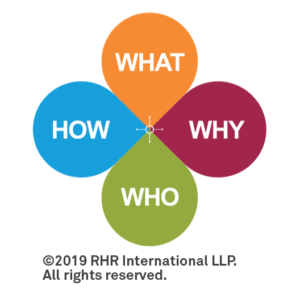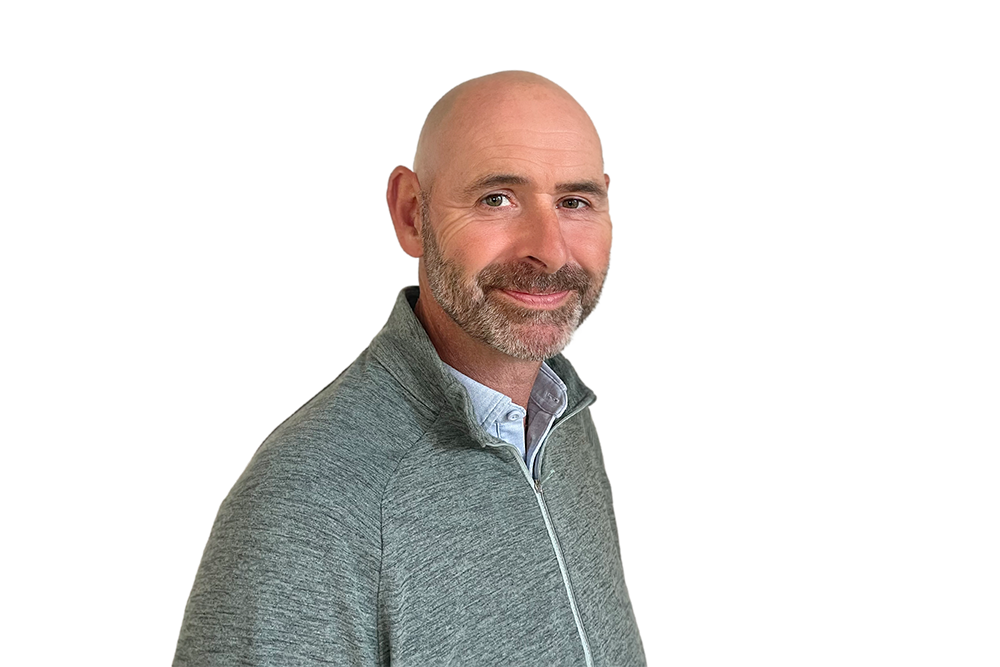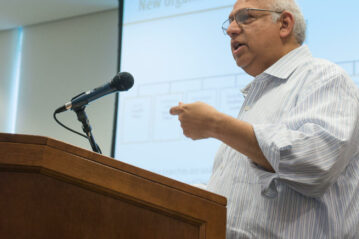Why Feedback Matters in Top Team Performance

The current business environment is more uncertain, fast-paced, and dynamic than ever before. In this setting, senior teams must think critically about what they can do differently or where they might improve to optimize the performance of their teams and organizations.
An important part of this is having an accurate—and comprehensive—understanding of the team’s top development needs.
Our experience and research indicate that while senior teams often have a clear point of view regarding their development areas, those on the outside looking in—including those in the same organization—can have a different perspective. And this difference matters. By understanding not only their own views regarding their development opportunities but the views of their stakeholders as well, senior teams can attain a more comprehensive understanding of their areas for improvement. In turn, this can help them more fully develop and utilize their team’s capabilities and leverage the strengths of the organization to drive meaningful results.
In light of this, what do senior teams feel are their top areas for improvement? How are they similar or different from the development needs highlighted by those on the outside looking in? What gaps currently exist that, if addressed, could potentially improve the performance of both the teams and their organizations moving forward?
To address these questions, we reviewed data from senior team members and other stakeholders in our database who provided feedback on their leadership teams’ opportunities for improvement as part of RHR’s STE SurveySM (Senior Team Effectiveness Survey). We analyzed data from 25 different organizations, comparing the open-ended responses of more than 170 senior team members (i.e., members of teams leading an enterprise, business unit, or function) to the feedback provided by more than 540 internal stakeholders (e.g., direct reports, other employees in the organization). There was some alignment in what was highlighted as most important by each group—along with some key differences.
Similarities
When asked to identify the top improvement opportunities for their senior teams, team members and their stakeholders alike agreed the teams needed to improve in doing the following:
- Developing and clarifying a compelling vision and strategy to guide the organization moving forward.
- Communicating the direction and priorities to the broader organization more clearly, frequently, and in multiple ways—and then communicating again.
- Building organizational capability by improving all stages of the talent lifecycle, including succession planning and the hiring, development, and retention of strong talent.
- Prioritizing more effectively and focusing on only the most important issues.
The significance of these four development areas is understandable. For an organization to move forward, it is important for senior leadership to define and communicate (repeatedly) a clear direction and ensure only the most critical work—that which supports the vision and strategy—is pursued. They must also hire the right people and/or develop the necessary skills and capabilities within their organizations to achieve their strategic goals.
Indeed, individuals in our sample recommended the senior teams “develop a clearer, challenging but achievable vision that acts as a better filter for decision making”; “present a unified message and deliver it repeatedly”; and “eliminate unnecessary efforts that don’t drive the strategy or add business value.” Senior teams were also urged to “prioritize talent development and improve capabilities at all levels.”
Given the importance of addressing these development opportunities, there would be great value in removing any potential obstacles that might stand in the way. What possible barriers, if removed, could help senior teams improve in these areas more effectively? Data from their stakeholders may provide some useful clues.
Differences
While senior teams and their stakeholders were aligned on several key areas for improvement, the stakeholders highlighted two additional development opportunities for the senior teams:
- Be more visible. Get out and engage more with others in the organization.
- Empower others. Delegate and push down decision-making authority so everyone, including members of the senior team, can work at the right level.
Addressing these two development areas could better enable senior teams to attend more effectively to the opportunities for improvement listed in the section above.
First of all, by empowering others to take on additional work and by delegating work appropriately, senior teams could have more time to focus on higher-level and longer-term objectives. These could include developing a vision and strategy for the future and determining how best to manage talent given their strategic goals. Indeed, stakeholders recommended the senior teams “stay out of the day-to-day issues that should be handled by the lower levels” and “trust and empower their employees and stop micromanaging, which should free up some of their time.”
Secondly, spending more time with others in the organization—whether through direct interactions, town halls, etc.—would give senior teams not only the opportunity to communicate more frequently with their employees (enabling greater alignment) but also would help leaders have a better sense of the pulse of the organization and its needs. The senior teams in our sample were encouraged to “increase visibility in the organization so employees can see them and interact with them” and “engage more frequently with all levels of the organization to better understand the employee experience.”
Additionally, increased contact with employees may allow leaders to more clearly see where there are gaps in capabilities or skills, allowing them to either address these gaps directly (e.g., through mentoring or providing training opportunities) or better understand how talent management practices (e.g., talent acquisition, development, retention programs) must change to address these gaps moving forward.
Conclusion
When asked to provide feedback on the development opportunities for their senior teams, both senior team members and their stakeholders recommended the teams focus on improving in the following areas: developing a vision and strategy, improving communication and messaging to the rest of the organization, focusing more on talent management, and prioritizing more effectively. The stakeholders also highlighted two additional areas for improvement that if addressed effectively could potentially help senior teams better tackle other development opportunities. Namely, the stakeholders noted the senior teams could 1) be more visible and spend more time with employees and 2) delegate more work as needed. Thus, while the senior teams had a perspective on where they could improve, taking into consideration the unique perspectives of their stakeholders led to a more complete picture of the teams’ development opportunities—and additional ways to potentially address them moving forward.

Determining which direction to take your company in is one thing; knowing how to get there is another. To learn how RHR can help your senior teams establish a clear direction and align behavior around it while enhancing your team’s ability to work together to achieve their organizational goals and create impact on the bottom line, contact Orla Leonard, Practice Leader, Senior Team Effectiveness.









